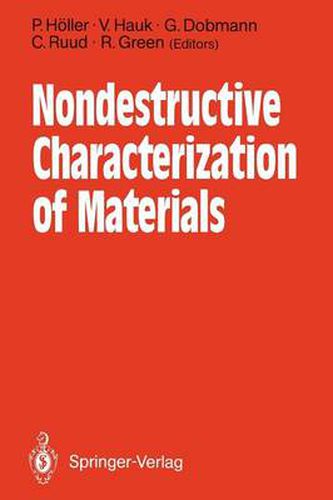Readings Newsletter
Become a Readings Member to make your shopping experience even easier.
Sign in or sign up for free!
You’re not far away from qualifying for FREE standard shipping within Australia
You’ve qualified for FREE standard shipping within Australia
The cart is loading…






This title is printed to order. This book may have been self-published. If so, we cannot guarantee the quality of the content. In the main most books will have gone through the editing process however some may not. We therefore suggest that you be aware of this before ordering this book. If in doubt check either the author or publisher’s details as we are unable to accept any returns unless they are faulty. Please contact us if you have any questions.
Engineering structures for reliable function and safety have to be designed such that operational mechanical loads are compensated for by stresses in the components bearable by the materials used. Vhat is bearable ? First of all it depends on the properties of the chosen materials as well as on several other parameters, e.g. temperature, corrosivity of the environment, elapsed or remaining serviceable life, unexpected deterioration of materials, whatever the source and nature of such deterioration may be: defects, loss of strength, embrittlement, wastage, etc. DEFECTS and PROPERTIES of materials currently determine loadability. Therefore in addition to nondestructive testing for defects there is also a need for nondestructive testing of properties. The third type of information to be supplied by nondestructive measurement pertains to STRESS STATES under OPERATIONAL LOADS, i.e. LOAD-INDUCED plus RESIDUAL STRESSES. Residual stresses normally cannot be calculated; they have to be measured nondestructively; well-approved elastomechanical finite element codes are available and used for calculating load-induced stresses; for redundancy and reliability, engineers, however, need procedures and instrumentation for experimental checks.
$9.00 standard shipping within Australia
FREE standard shipping within Australia for orders over $100.00
Express & International shipping calculated at checkout
This title is printed to order. This book may have been self-published. If so, we cannot guarantee the quality of the content. In the main most books will have gone through the editing process however some may not. We therefore suggest that you be aware of this before ordering this book. If in doubt check either the author or publisher’s details as we are unable to accept any returns unless they are faulty. Please contact us if you have any questions.
Engineering structures for reliable function and safety have to be designed such that operational mechanical loads are compensated for by stresses in the components bearable by the materials used. Vhat is bearable ? First of all it depends on the properties of the chosen materials as well as on several other parameters, e.g. temperature, corrosivity of the environment, elapsed or remaining serviceable life, unexpected deterioration of materials, whatever the source and nature of such deterioration may be: defects, loss of strength, embrittlement, wastage, etc. DEFECTS and PROPERTIES of materials currently determine loadability. Therefore in addition to nondestructive testing for defects there is also a need for nondestructive testing of properties. The third type of information to be supplied by nondestructive measurement pertains to STRESS STATES under OPERATIONAL LOADS, i.e. LOAD-INDUCED plus RESIDUAL STRESSES. Residual stresses normally cannot be calculated; they have to be measured nondestructively; well-approved elastomechanical finite element codes are available and used for calculating load-induced stresses; for redundancy and reliability, engineers, however, need procedures and instrumentation for experimental checks.